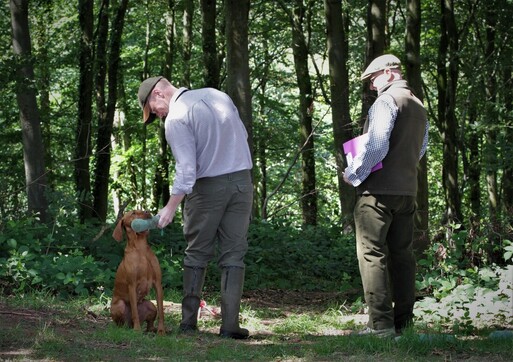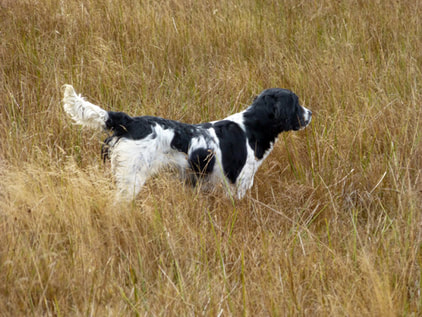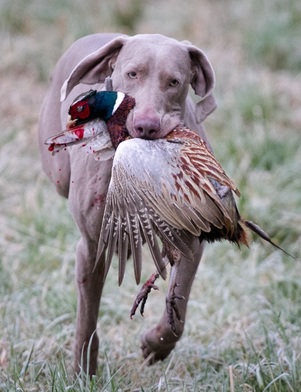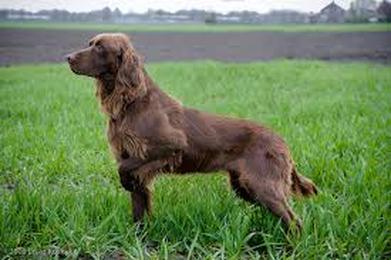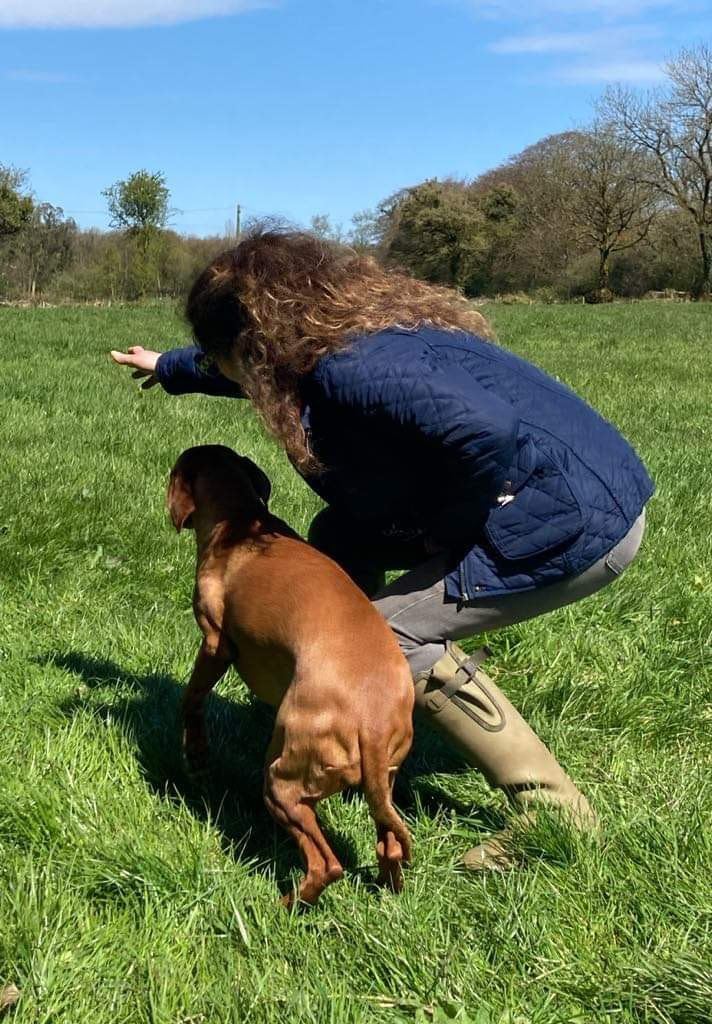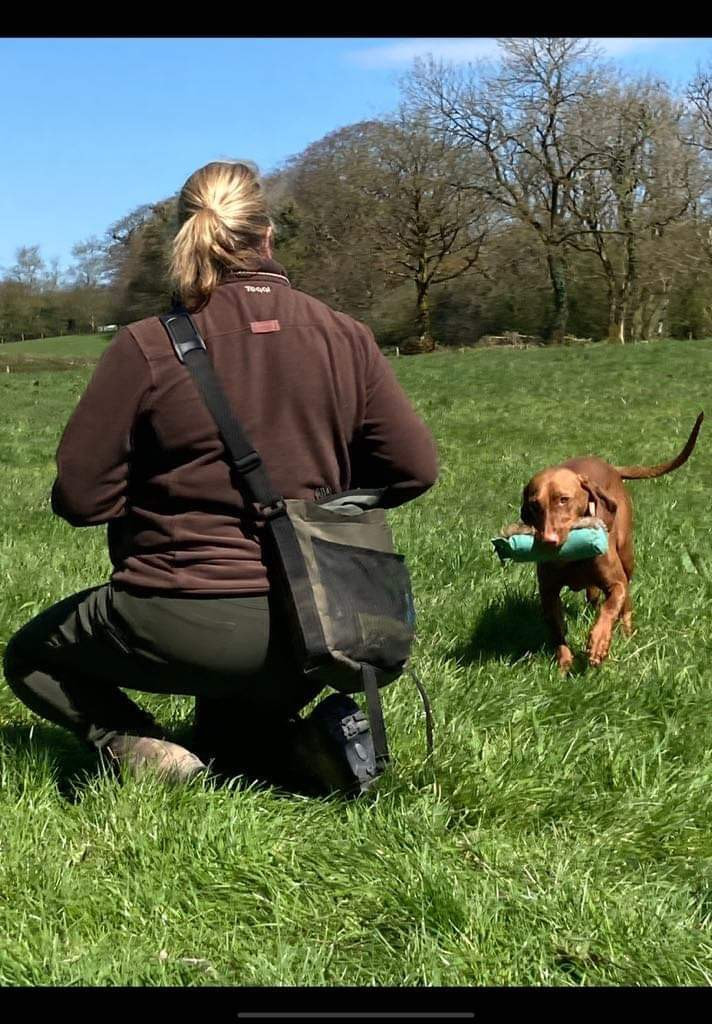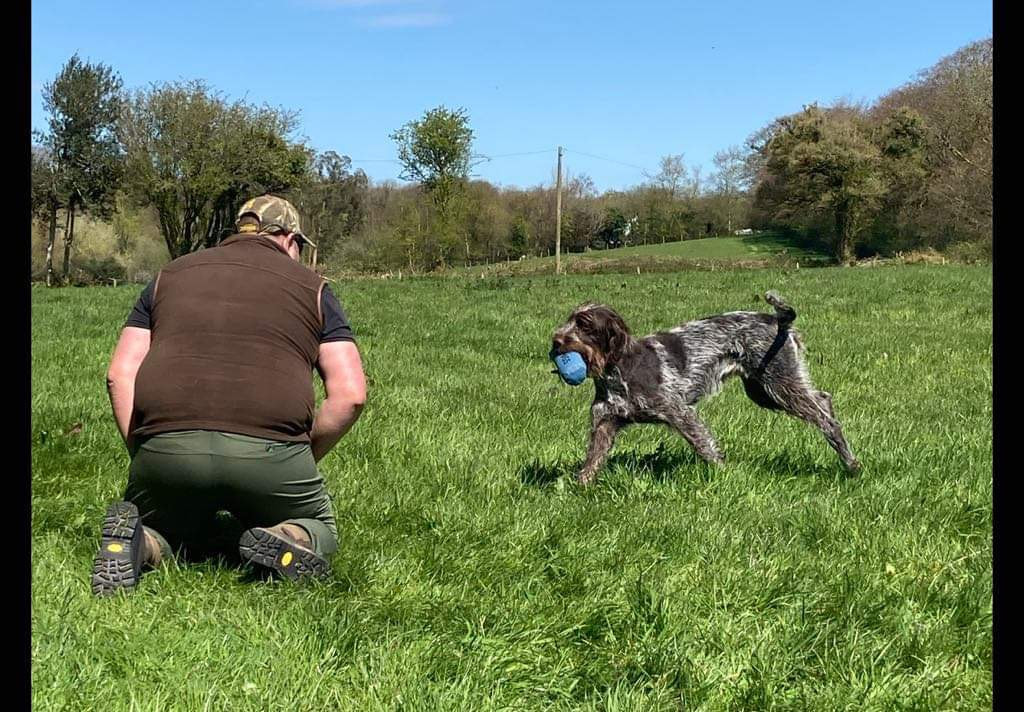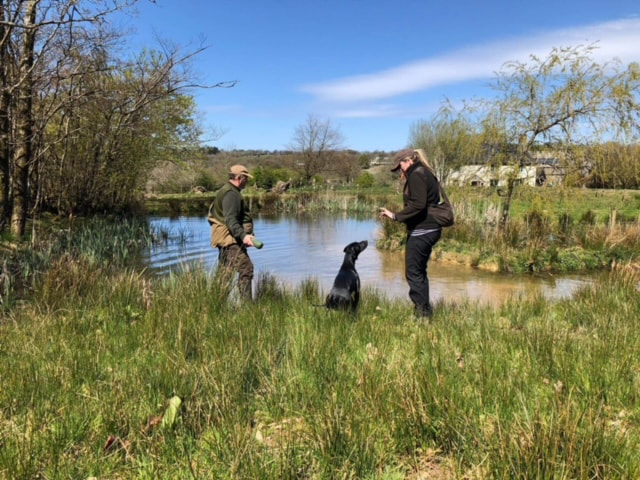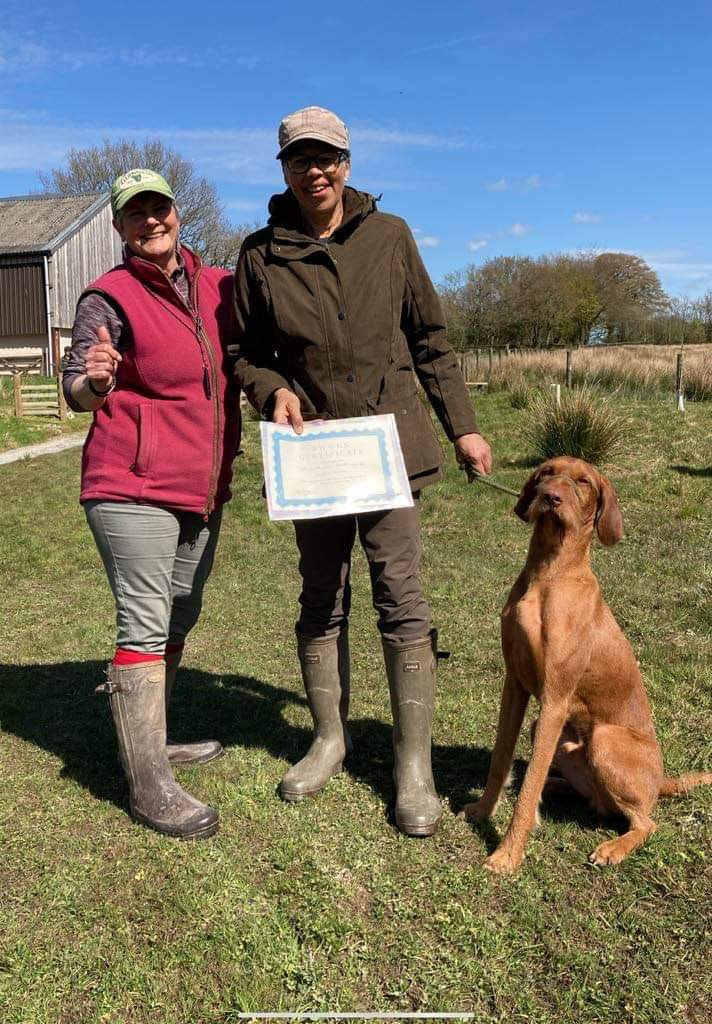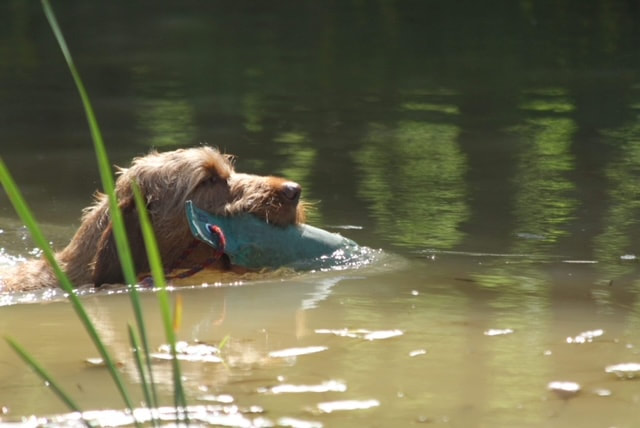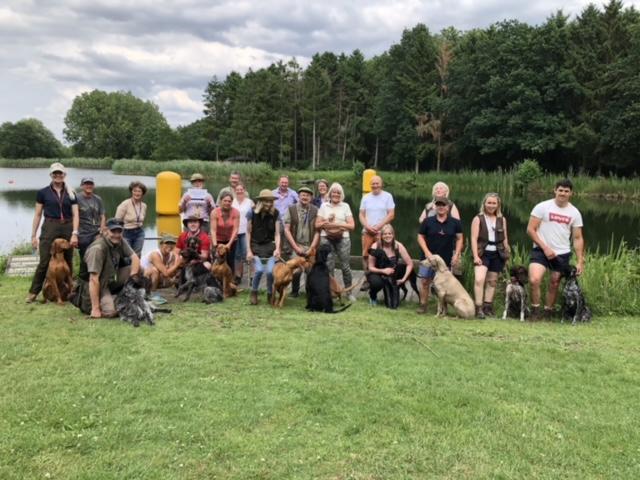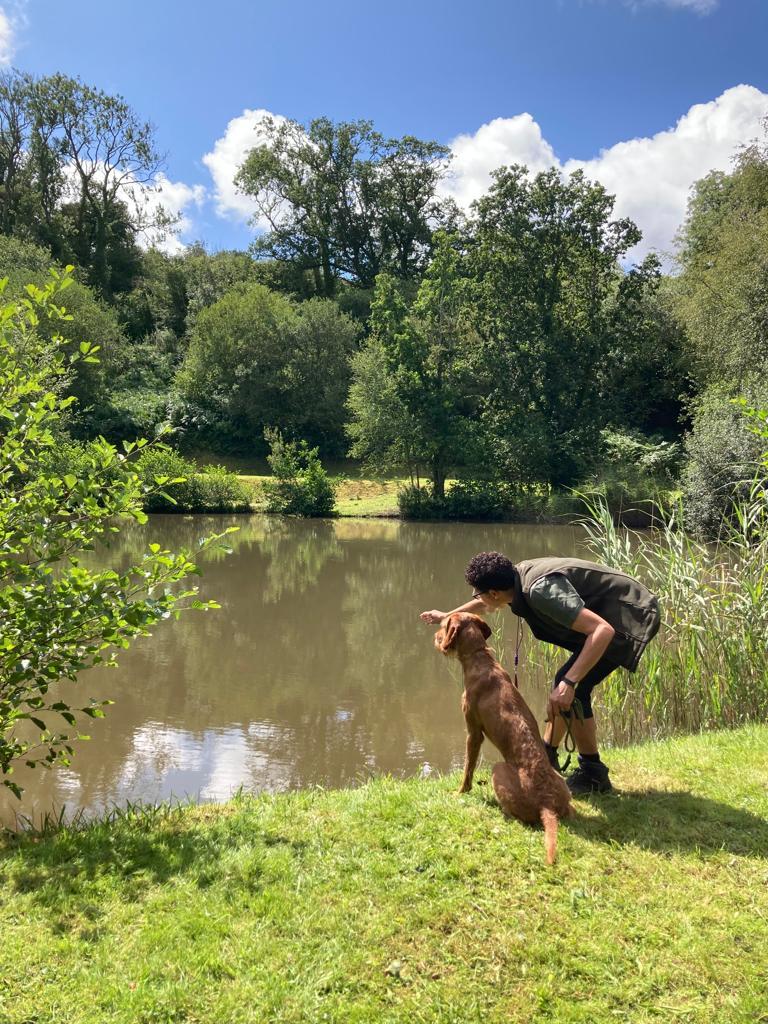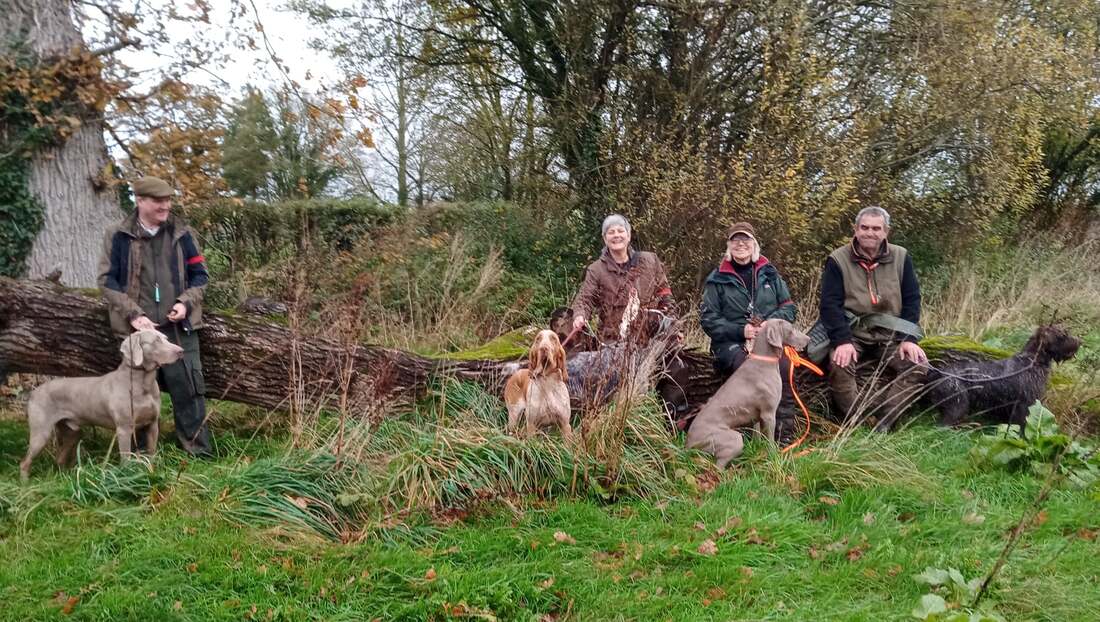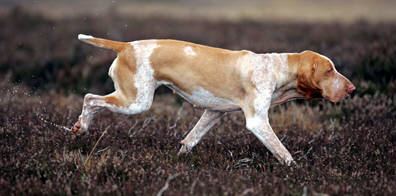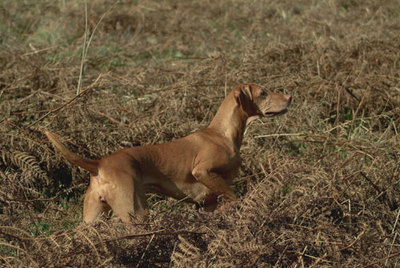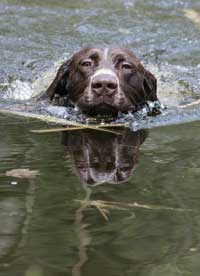Latest Update 8th July 2024We held our Gundog Working Test on Saturday 6th July 2024 - you can see the results on the button below.
The schedule and entry forms are now available for our field trials for the 2024/25 season. See below in the field trial section. A successful HPR J Regulations Seminar was held on 15th June 2024. FIELD TRIALS - GWT - POINTING - TESTS - TRAINING
Monthly training update - 2024 dates released: Sat 20th April - working on post season problem solving Sat 18th May - training for gundog working test scenarios Sat 22nd June - general training day Sun 30th June - water training day Sat 17th August - general training day Sat 14th September - general training with possibility of cold game There is no training in July currently, but we will hold our Gundog Working Test on Saturday 6th July 24. The training entry form has been updated and you will find this on button link under the Training section below. Water training at Lenches Lakes, Evesham will be on Sunday 30th June (see entry form in the Water Training section below). We are working on a second day at the Devon Lakes, date TBC. We are also working to organise a specific retrieving training day, date TBC. BACS payments are preferred; all payment methods and details are included on the entry form. All levels of experience welcome £30 members / £40 non-members 9.30am meet for a 10.00am start |
FOR HPR ONLY
|
CORONAVIRUS:
The BWWGS will continue to follow any guidelines issues by Government and The Kennel Club for your safety. Instructions will be contained in the BWWGS Standing Instructions which are available to download.
The BWWGS will continue to follow any guidelines issues by Government and The Kennel Club for your safety. Instructions will be contained in the BWWGS Standing Instructions which are available to download.
GUNDOG WORKING TEST 2024:
Date: Saturday 6th July 2024
Venue: Sholford Farm, Huish Champflower, Near Taunton
Completed - see the results on the button near the top of this page
Venue: Sholford Farm, Huish Champflower, Near Taunton
Completed - see the results on the button near the top of this page
FIELD TRIALS 2024/25
|
Stake 1: OPEN (on Grouse)
Date: 31st August 2024 Venue: Alston, Cumbria Judges: Steve Pleasance (A Panel) & Mike Ede (B Panel) Closing Date: 7th August 2024 Draw Date: 8th August 2024 Entry Fees : £50 members / £60 non members Stake 2: ALL AGED
Date: 19th October 2024 Venue: Upton Pyne, Exeter, Devon Judges: Coshy Kimberley (A Panel) & Christine Carpenter (B Panel) Closing Date: 26th September 2024 Draw Date: 27th September 2024 Entry Fees : £50 members / £60 non members Stake 3: NOVICE
Date: 2nd December 2024 Venue: Upton Pyne, Exeter, Devon Judges: Stevie Allerton (A Panel) & Andrew Farley (Non Panel) Closing Date: 10th November 2024 Draw Date: 11th November 2024 Entry Fees : £50 members / £60 non members Stake 4: NOVICE
Date: TBC Venue: TBC Judges: TBC Closing Date: TBC Draw Date: TBC Entry Fee: TBC We are requesting paper entries for this field trial season. Our preferred method of payment is via BACS although cheques will continue to be accepted. Please see the Schedule and Standing Instructions for details of how to enter and make payment. Thank you.
Before entering a field trial please familiarise yourself with the Kennel Club J Regulations and Rules for Field Trials, the BWWGS Standing Instructions and our Risk Assessment. |
POINTING TESTS:
|
Schedule: Not available
|
4HPR TRAINING Programme Summer 2024:
Training updates
Saturday 22nd june
Another great day at the BWWGS HPR office! Thank you to Mike Ede, Peter Szalai, Ray Davies, Mark Spearing & Julia for coming out to play. Thanks as always to Julia & John Griffiths for hosting us at Whiterush Gundogs, to all you lovely handlers and dogs, to Juliette Thomas and Andy Wagstaff for throwing dummies all day and to Jason for taking these fab photos. Our next training is on 17th August. Our GWT is on 6th July.
Saturday 22nd june
Another great day at the BWWGS HPR office! Thank you to Mike Ede, Peter Szalai, Ray Davies, Mark Spearing & Julia for coming out to play. Thanks as always to Julia & John Griffiths for hosting us at Whiterush Gundogs, to all you lovely handlers and dogs, to Juliette Thomas and Andy Wagstaff for throwing dummies all day and to Jason for taking these fab photos. Our next training is on 17th August. Our GWT is on 6th July.
Another excellent day at the BWWGS HPR summer training programme on Saturday 18th May. Another great turnout of handlers and always nice to welcome new faces too. We were blessed with perfect weather and were able to make use of the water to cool the dogs off. Thank you as always to our hosts Julia & John Griffiths at Whiterush Gundogs, Mark Spearing, and our guest trainers Mike Ede and Peter Szalai. Huge thanks also go to all the handlers for being such good fun and creating a great atmosphere.
Finally....... we managed to get the photo of both of our "most improved handlers" from last summer. Imogen Ransom and Nigel Samson - congratulations again to you both and Hector & Barney of course.

20th April 2024
What a fabulous start to the BWWGS HPR summer training programme on Saturday. We had a great turnout of handlers with their lovely dogs, and we had glorious sunshine all day! Thank you as always to our hosts Julia & John Griffiths at Whiterush Gundogs, Mark Spearing, Ray Davies and our guest trainers Mike Ede and Steve Kimberley. Thank you also to all the handlers for being such good fun. Congratulations to Imogen Ransom on finally being awarded her certificate for "most improved handler" from last summer's training.
The committee are happy to be able to provide a further schedule of training days for 2024 (see top of this page for the dates). Summer training will again be held at Sholford Farm by kind permission of Julia and John Griffiths. Trainers for this year will be Ray Davies, Mark Spearing, Christine Carpenter, Mike Ede, Peter Szalai and Julia Griffiths. We hope to have other guest trainers too. Water training will be held at Lenches Lakes and at the Devon Lakes again, with other more specific training TBC.
The entry form and all details are included on the "training day entry form" button above.
For details of the water training days, please see the details and entry forms below in the Water Training section.
If you would like to join us for any of our 2024 training sessions, please either complete an entry form or, if you have any questions, contact us via messenger on our Facebook page or email Sue Wagstaff at [email protected] - follow us on Facebook too for updates.
The entry form and all details are included on the "training day entry form" button above.
For details of the water training days, please see the details and entry forms below in the Water Training section.
If you would like to join us for any of our 2024 training sessions, please either complete an entry form or, if you have any questions, contact us via messenger on our Facebook page or email Sue Wagstaff at [email protected] - follow us on Facebook too for updates.
WATER TRAINING:
SHOOTOVER TRAINING DAYS:
Warning: ALABAMA ROT
HAS RISEN ITS HEAD AND CAN BE FATAL
It's a condition with no real cure and occurs in very wet conditions. It breeds in boggy, wet grounds and if dogs lick themselves they can digest it. Sores can appear on the paws and body. ACTION: Wash your dog down and dry off and get your dog off to the vets. (Wash towels in disinfectant).
HUNT POINT RETRIEVERS:
After the Second World War this sub-group of gundogs known as Hunt Point Retrieve breeds were imported into Great Britain. At the present time there are just thirteen of the many continental breeds recognised by the Kennel Club in the UK. These are the Bracco Italiano, Brittany, German Shorthaired Pointer, German Longhaired Pointer, German Wirehaired Pointer, Hungarian Vizsla, Hungarian Wirehaired Vizsla, Korthals Griffon, Italian Spinone, Large Munsterlander, Small Munsterlander, Slovakian Roughhaired Pointer and the Weimaraner.
These breeds today are mainly used for rough shooting on game, falconry and deerstalking but can adapt to make a useful peg dog or beater’s dog. If used for deer stalking they would be expected to point unseen deer, track to dead deer or track and hold wounded deer at bay and then inform the stalker when it is located by giving tongue.
The different breeds within the group were originally bred to work the game or terrain of their specific region and therefore developed different styles of working, but basically they all perform to the same outcome. Some were originally used for boar or deer; others for fur and feather. Now, they are all expected to hunt any terrain put before them: moorland, wetland, scrub, woodland; and adapt their pace accordingly. Apart from the Brittany, they are all basically the same in structure but not necessarily the same in character.
When hunting open ground, the dog would be expected to quarter into the wind taking in ground from 50 to 150 metres either side of the gun. When working woodland they adapt to a closer pattern and keep in touch with the gun. They are expected, on locating game, to point and hold that point until required to flush. These dogs are air scenting and have a higher head carriage thus they have less need to enter thick cover. By using the wind, these dogs have the ability to pick up scent at a distance.
As in other breeds, game is expected to be retrieved gently to hand. They are for the most part keen swimmers once they overcome any initial reluctance.
These breeds today are mainly used for rough shooting on game, falconry and deerstalking but can adapt to make a useful peg dog or beater’s dog. If used for deer stalking they would be expected to point unseen deer, track to dead deer or track and hold wounded deer at bay and then inform the stalker when it is located by giving tongue.
The different breeds within the group were originally bred to work the game or terrain of their specific region and therefore developed different styles of working, but basically they all perform to the same outcome. Some were originally used for boar or deer; others for fur and feather. Now, they are all expected to hunt any terrain put before them: moorland, wetland, scrub, woodland; and adapt their pace accordingly. Apart from the Brittany, they are all basically the same in structure but not necessarily the same in character.
When hunting open ground, the dog would be expected to quarter into the wind taking in ground from 50 to 150 metres either side of the gun. When working woodland they adapt to a closer pattern and keep in touch with the gun. They are expected, on locating game, to point and hold that point until required to flush. These dogs are air scenting and have a higher head carriage thus they have less need to enter thick cover. By using the wind, these dogs have the ability to pick up scent at a distance.
As in other breeds, game is expected to be retrieved gently to hand. They are for the most part keen swimmers once they overcome any initial reluctance.
